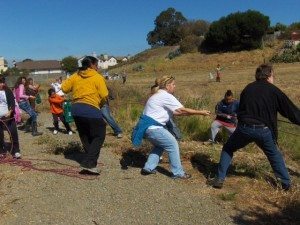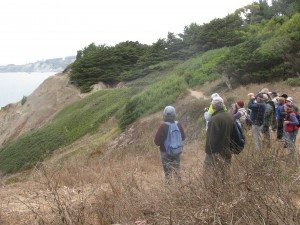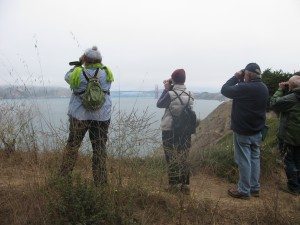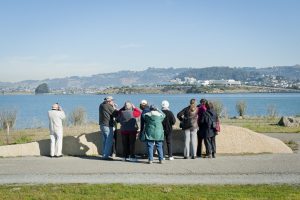A fledgling bird photographer
By Lee Aurich
My addiction to bird photography started April 15 of this year.
Until we moved to Lake Merritt from the Oakland hills, my wife had been the supporter of Golden Gate Bird Alliance and had three feeders (thistle, seed, and sugar-water) to attract what she calls “LBBs” – Little Brown Birds.
But on a Sunday last spring, I was wandering an inner edge of Lake Merritt with my telephoto lens and stumbled across this:
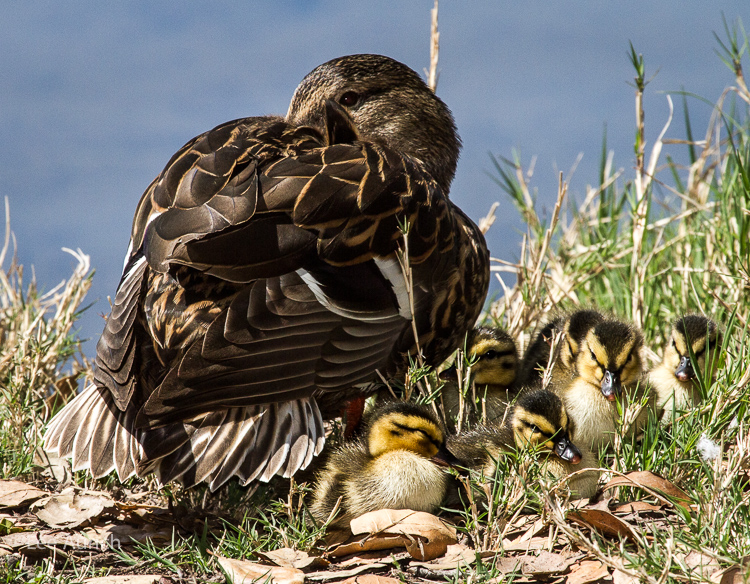 Photo by Lee Aurich
Photo by Lee Aurich
They were so cute. As I patiently watched over the course of an hour, the ducklings began to explore their surroundings:
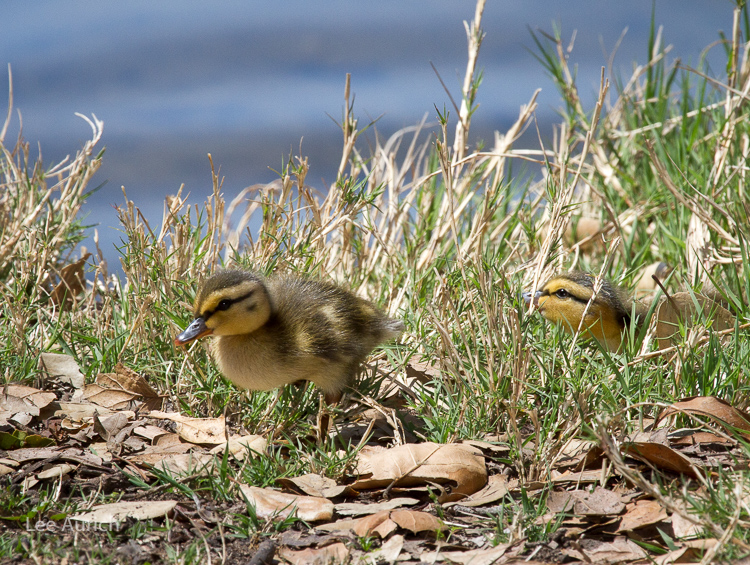 Photo by Lee Aurich
Photo by Lee Aurich
Finally, mom organized a march…
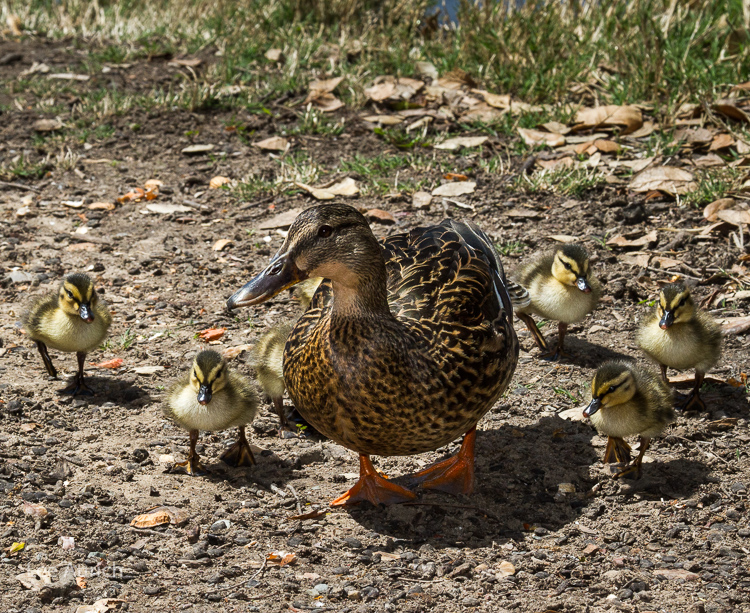 Photo by Lee Aurich
Photo by Lee Aurich
And led them to the lake.
 Photo by Lee Aurich
Photo by Lee Aurich
I was hooked.
Over the next few months, I actively sought nests, nestlings and interesting behavior.
I was very fortunate to have several excellent GGBA birders as my guides, teachers, and mentors: Hilary Powers, Ruth Tobey, and Mary Ellen McKey. They patiently answered my questions and worked to teach me how to identify species (gently starting with elementary facts like how to distinguish a Snowy from a Great Egret).
With a learning disability around remembering names and verbal descriptions, I found myself focusing on the behaviors and the beauty. My passion is sharing with others, particularly non-birders, behaviors not normally noticed.
Like this Mallard duckling trying to imitate mom in learning to fly:
 Photo by Lee Aurich
Photo by Lee Aurich
Or a sequence of an Osprey fledgling sitting a couple hundred feet away from the nest and unaware, until the last minute, as its sibling stealthily approached from the rear:
 Photo by Lee Aurich
Photo by Lee Aurich
I have started building a calendar of guesses of nest-building, birth and fledging dates for a variety of birds to whom I have been introduced since the ducklings caught my heart. Next spring, camera in hand, I will be exploring, waiting, and hoping for a clear view, not too far away, good light, strong background, and interesting behavior.
As I read the East Bay Birding group emails, I have been inspired by others’ observations and great photos. I have a lot to learn and a lot to see.
I smiled when I read Rue Mapp’s GGBA blog post a few weeks ago where she described Birdchick’s criteria for “Are you a birder?” The questions were: Do you own a pair of binoculars? How many bird books (or apps) do you own?…


